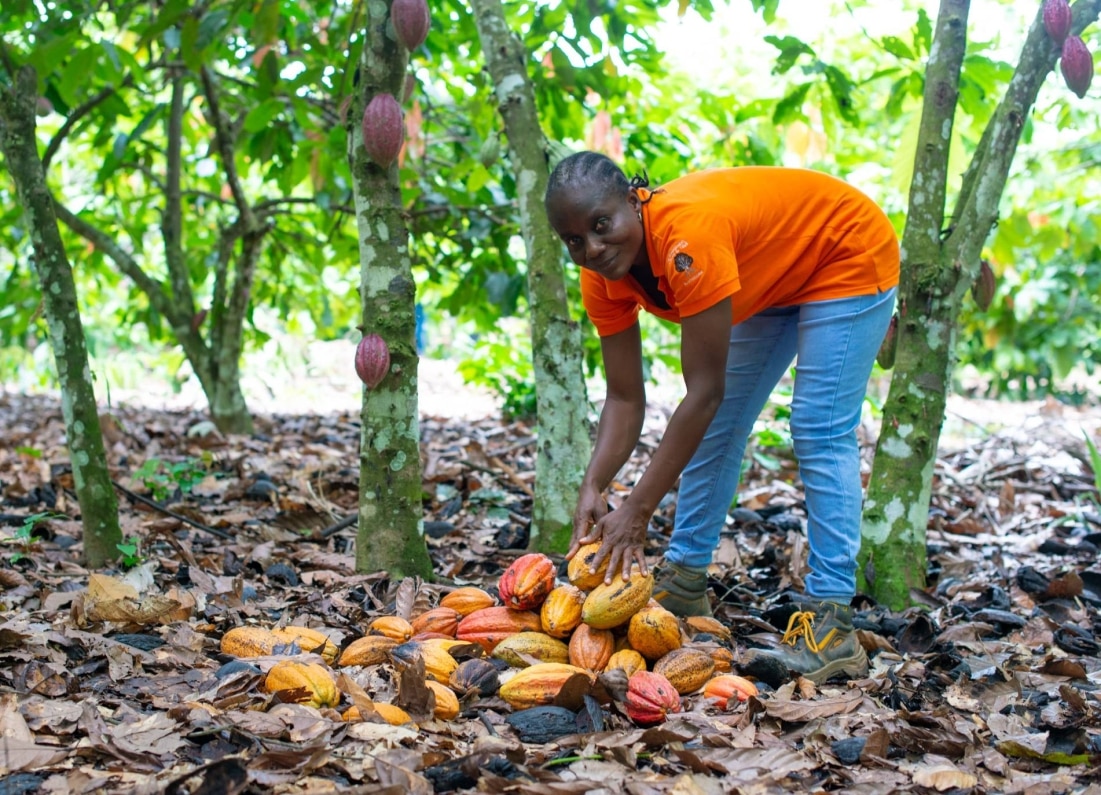Agroforesty activities in the Income Accelerator Program
As an innovative family-centered approach, the income accelerator program is aiming to close the living income gap and reduce child labor risks by encouraging changes in behavior and rewarding positive practices – both within the home and on the farm.
The income accelerator program aims to improve the livelihoods of cocoa-farming families. The program rewards cocoa-farming families not just for the quantity and quality of their cocoa beans, but also for practices that benefit the environment and local community. The program incentivizes and enables cocoa-farming families to engage in practices in four areas: school enrollment, good agricultural practices, agroforestry activities, and diversified incomes. Families in the program can receive up to €500 annually for the first two years and €250 per year thereafter, with the incentives distributed equally through mobile money between the two household heads (i.e., man and woman) to encourage gender equality, share financial responsibilities, and build more resilient households.
Cocoa-farming families can receive up to €100 from incentives by engaging in agroforestry activities – one of the four pillars of the income accelerator program. We provide families in the program with native forest and fruits trees like fraké, irvingia, akpi, framiré, bété, peper…) to help improve the resilience of their cocoa farm and promote biodiversity and deliver opportunities for income diversification.
What impact has the income accelerator program had on agroforestry activities?
Published in summer 2023, the KIT Institute Midline report of the pilot phase examined the 1000 cocoa-farming families of the income accelerator program pilot, revealing the following impacts for agroforestry activities:
-
20 shade and fruit trees delivered on average to each cocoa-farming family, ready for planting
-
20 000 tree seedlings were distributed in total
-
92% of cocoa-farming families declared to have planted the trees
We had initially built the program with the objective of planting 10 trees per year per hectare and based on the supplier data, we reached 20 trees per year per hectare. Great to see that we are planting more trees than anticipated. These shade trees are on top of the 1M trees distributed through the Nestlé Cocoa Plan (see latest Nestlé Cocoa Plan progress report).
As we move to expand the income accelerator program reach further into Côte d’Ivoire and Ghana, the pilot has helped identify ways to improve and amplify impact in the future. Our goal is to maximize the potential of the income accelerator program by building on our learnings, such as highlighting why it is important that cocoa-farming families engage today in the practices we encourage (i.e. agroforestry) because this is how they will build resilience in the long term.
Following the launch of the pilot in 2020, we moved to a test at scale phase in Côte d’Ivoire reaching 10 000 cocoa-farming families. Today, the program has reached 30 000 families in Côte d’Ivoire and Ghana and is estimated to expand to an estimated 160 000 families by 2030.
We will continue to plant more trees by promoting the uptake of agroforestry activities and provide forest and fruit tree saplings, as well as encourage their successful planting and maintenance by cocoa-farming families as we work toward our 2030 ambition.
For more information on the income accelerator program and its impact on cocoa-farming families, click to read and discover
How the program works;
the Income Accelerator Program Progress Reports
KIT Institute reports .
